When the Acer Xplova X5 was announced last year, it got a lot of attention for its headline-grabbing features: An integrated action camera, cellular connectivity, full color touchscreen with maps, and integrated nacho cheese dispenser. Well, maybe not the dispenser. But certainly the others.
The question was – would it be a worthwhile unit? Actually, the real question was – why the heck is Acer making a bike computer? Aren’t they still making computers with 8X CD-RW drives?
Turns out they have a lot of potential. And since starting shipping a month or so ago, the end-result is both awesome and face-palming at once. It’s like seeing a lonely piece of bacon lying on the side of the road. It had amazing potential, but failed in execution.
And thus: The Acer Xplova X5.
But don’t mistake the above for thinking the potential in the X5 is bad. In fact, there are boatloads of lessons that companies like Garmin, Wahoo, Polar, and others can learn from the Xplova X5. And in turn, one can only hope that Acer reciprocates in learning those lessons from the leading bike computer companies. After all – the others didn’t get to be leaders for no good reason. Equally, with the Xplova X5 having an HD camera in it, cellular connectivity, and much more – there’s definitely some interesting tech to be seen. I’d highly recommend folks read through to understand where Acer has some really innovative ideas here.
So I’m going to shake things up a bit here in my standard review formatting. Many times I’ll never finish writing a review because I end up getting bored with a product. So much so that going through all the work to get a review out for a product that I know nobody cares about, seems silly. I have a graveyard of partially finished review posts. I just get distracted in that there are so many other interesting things out there (good or bad) to talk about. So I’m going to consolidate this down into four core sections:
– What’s in the box: Ok, we’ve at least got to have an unboxing, I took the darn photos after all
– The Basics: Let me just give you a flavor of things
– What I like: Here’s the things that actually do make it unique
– What I hate: And here’s why this is the dish that I don’t need any more bites from.
Simple as that. This gives you the key takeaways from my time with the unit, without expending time that could be used for going deeper on some other technology that you want to hear more about. Sound good? Good. Consider it an experiment.
What’s in the box:
First up is getting it out of the box. It’s actually a pretty cool designed box.
Inside you’ll find the unit looking up at you, with the extra parts sitting below it.
Those extra part goodness pieces are an out-front bike mount, some paper manuals, two out-front mount adapters (to fit different bar sizes), a small hex wrench (to attach mount), and a micro-USB charging cable.
The mount uses the standard Garmin quarter-turn mount, and the actual mount itself is very similar to the one that Garmin provides in some bundles.
The back of the unit has a rubber USB port cover, though unfortunately that permanently fell off when I tried to uncover it for this photo.
Here’s a few more pics of the unit:
The one thing I did like during setup is that I could configure the WiFi directly on the screen itself, which leverages Android behind the scenes. Though, you will need to go to their site on a browser or their phone app to create an account on their web platform.
And finally, just remember to heed this warning. Do NOT touch the darn thing while riding.
With that, let’s move onto the basics of using it.
The Basics:
The Xplova X5 is a full-featured mapping bike computer, not unlike that of the Edge 1000. In fact, they are almost identical in sizing in every way. The Edge 1000 will look skinnier however, due to the industrial design on the Xplova X5 making it appear bigger than it is.
However there are some core differences in terms of componentry. For starts, the X5 has the camera sitting in the front (720p, don’t worry, we’ll talk about that in painful detail later), which the Edge series lacks. Further, it also has a SIM-card slot, which can be used for cellar connectivity (the Edge 1000 doesn’t have that either). However, the X5 does lack one thing the Edge 1000 has: A MicroSD card for storage. This is a slightly odd omission, since…ya know…it has a camera in it.
Once you power it on after setup, the X5 takes you to the main cycling screen. There isn’t a dashboard of sorts to pick functions like structured training or the sort – likely because those functions don’t exist. It’s really more about recording the ride and mapping than it is about a highly competitive endurance sports unit.
For the SIM card, you’ll insert that in the side:
It’ll then ask for a PIN on boot-up each time, as well as allow you to control the roaming/bandwidth options.
But it does have basics like creating bike profiles and pairing ANT+ sensors (it can’t pair to Bluetooth Smart sensors, it uses Bluetooth Smart for phone connectivity only). You can save sensors per bike, though the HR sensor spans all bikes.
You can load maps on the unit easily using an internal interface that connects to WiFi and pulls them down for any region/country you select. It’s quick and simple, and works really well:
The full-color screen will then display your location as well as your track while riding, as well as the handful of data pages you can configure:
Data pages can mostly be configured as you see fit with the standard offerings of data you see on most computers. This even includes metrics like TSS, but not Normalized Power or Intensity Factor (IF).
There is one screen (the main one with the gauges/dial) that doesn’t appear to be changeable however:
You can change data pages by either swiping the screen, or by pressing the buttons on the side. Interestingly some in-ride data pages are only accessible via the left buttons, while others only from the right side. While the start/stop and recording buttons atop the unit are easily pressed mid-ride, the left/right side buttons are actually pretty awkward to hit during a ride, which is odd because that design is pretty similar to the Edge series devices. But I think it’s how hard you have to press them combined with them blending into the body a bit more. Not a deal-breaker, but a minor issue.
Still, despite some minor quirks, the unit does actually work fairly well in terms of being a straightforward bike computer. As I talk about in the next section, the graphs are a nice touch and work pretty well. Also, the unit can be used for navigation if you create routes online using their site.
While out riding you can press the recording button (top-right) to record a short video clip at any time. You can also use smart triggers to have it record automatically based on various events like speed or power. All of that also works well (and more on that in a bit too).
Once you’re done with a ride you can long-hold the button to save a ride, which takes you to a nifty summary screen. From there it’ll leverage wireless connectivity to upload to their Xplova platform, which is sorta like going back to 2002-2004 web design principals. But the core of things are there. Plus, you can setup sync to Strava. And the files recorded on the unit itself are thankfully in simple .FIT format (like almost everyone else).
In general, I see good GPS accuracy and really good elevation accuracy. However, I am seeing some interesting sensor drop issues on power data, where other units aren’t having the same problem connecting to the same power meter. I’ve seen it on multiple rides outdoors connected to different power meters and haven’t quite figured out the root cause.
Ok, so that’s the basic overview of things. Instead, I want to focus on the really cool stuff…and then the less awesome stuff. For better or worse there’s a bit in both camps.
(I’ll add in a pile of DCR Analyzer links over the next 24 hours to look at GPS/Altimeter/Sensor data)
What I love:
There’s a number of really fascinating things within the Xplova X5 that aren’t seen anywhere else. Not just features for the sake of features, but some legit brilliant ideas that I looked at and was like “Why hasn’t anyone done that before?”. Some of them are obvious ideas that many have talked about, such as the camera (which I’ll come back to in a moment), and others are less obvious. Subtle really.
For example, check out this option at the end of a ride. It allows you to specify right then and there whether you want the ride to be public or private (or just friends only). Why can’t I do that on my Garmin or Wahoo or whatever, and then have that also trigger similar Strava privacy settings?
While we’re talking that screen – I like the way the map is inset into it on the summary page. Easy to see at a high level where I went.
Next, during the ride are the graphs on the unit. I’ve actually come to like these. They allow me to more easily see how I’m trending than just a typical 3s/10s/30s power (or heart rate) data field. It’s quite useful in fact. While the Edge series does have this for heart rate, it lacks it for power. Also, there’s a lot of wasted space on the Edge series for the graph. Sure, there’s some Connect IQ data fields that kinda solve it – but not like this.
They also dynamically rescale the chart during the ride over the period of that last 30 seconds or so. So if you’re nice and steady at 220w, it won’t show you this wonky chart from 0w to 1000w. Instead, it’s just a smaller slice. But if you pump it to 700w, it’ll rescale the chart until that data point has passed…then scale back again. Logical.
Next, unlike Garmin (or Wahoo), you can add waypoint and markers along the way on routes using their web site. These can be for food stops, touristy things, or just a reminder to take nutrition. This is especially ironic because Garmin has an entire outdoor wearables line, all requiring clunky desktop software to make waypoints. And even cooler is that for something like a cool section of the road you can create a smart-trigger for the video to automatically start recording when it passes it.
And then there’s the camera. Oh little camera…
When I first saw the unit I thought – that’s going to be stupid, it won’t really work well. And in some ways, that’s true. But let’s talk about the good first. The camera has the ability to be enabled via smart triggers. These can be things like speed triggers or power surge triggers. It’ll then automatically record a short clip (3/6/9 seconds long). There’s a 2-second smoothing built in, to ensure false-positives aren’t constantly recording either.
So I setup mine for a minimum wattage threshold of 350w, which tends to keep things interesting. It won’t usually trigger at stop signs/stop lights unless I punch the power excessively. But it will trigger for most surges where I’m doing something interesting.
That all works just great and captures boatloads of clips to choose from. Next, I like that it’ll allow me to compile these clips together into a short video that’s uploaded with each of my rides on the website. That too is cool! Imagine if Strava ever stopped combing its hair in the mirror and allowed short video uploads in addition to pictures?
Of course, the camera isn’t totally awesome. There’s a boatload of shortfalls that I’ll talk about in the next section. But the basic theory of it is cool. It’s execution beyond the three paragraphs of goodness above is what kills it. But if a company were to make some very minor tweaks to the camera piece, it could actually be really damn cool. Acer themselves could make all but one of these tweaks today in software, but the final tweak would require them spending a few bucks extra on a better camera.
Moving on, here’s another nuanced thing that’s a nice touch. In the account settings on the unit itself it actually pulls down my profile pic and shows it on the screen. Nothing major, but a nice little touch.
Next we’ve got maps. While companies like Garmin include maps on their Edge 1000, that’s only for the region you bought it in. If you want other maps you have to either use a free 3rd party service, or you have to buy maps from Garmin. Wahoo includes maps too for the whole world (+ easily downloadable options), but they’re limited in that they don’t list street names and are black and white.
But the Xplova is the best of both worlds. They allow you to very quickly download fully detailed color maps onto the unit with nothing more than checking the box for the city/town/region/country that you want. It’s silly easy and doesn’t require fiddling with any 3rd party service.
Why on earth I can’t do the same thing on Garmin Connect for an Edge device is still a mystery to me. After all – many people want to use their touring bike computer to tour in another country/region. It’s one of the most popular questions I get about maps on bike computers.
Finally, we’ve got that SIM card. Now, by and large, I think their particular implementation of it is useless. But in the right hands this could actually be implemented well for races. For example in triathlons where you’re unlikely to bring a phone with you. This would allow for tracking (à la Quarq Qollector style) without the overhead of a phone.
In theory, the same would hold true for group-style tracking between friends, but with approximately 4 people on this continent using the Xplova X5, it’s harder for me to validate how that works. Plus, for most casual group rides you’re going to have your cell phone on you anyway, so leveraging it there is less exciting. But, what is cool is that non-Xplova loaded friends can actually use their phone app to look at tracking info – so that’s nifty.
The overall point here being that there’s actually a number of interesting innovations in this unit:
– Love the privacy setting option
– Love the 30-second graphs
– Love the smart triggers on the camera
– Love seeing a short compiled video clip at the end uploaded to site (when it works)
– Love that you can easily download maps for any area in the world
– Like the idea of a SIM card slot (not tied to a service fee by default)
– Like the idea of phoneless tracking for races
– Love that they used Garmin’s quarter-turn mount (compatible with 3rd parties then!)
– Oh, and the touch-screen still works surprisingly well when I unnecessarily dump water on it
So there ya have it – plenty of goodness to be found on the unit.
What I hate:
Now, to say the X5 is an an amazing unit all around is a bit of a stretch. It’s like saying that burnt toast is great because it’s still food. At some point you have to step back and realize there’s just no way to justify the price of the unit as it stands today, given all the oddities.
First, let’s start with what is the most obvious problem the moment you start using the unit: The linguistics.
It’s a mess. There’s no other way of putting it. Many things are poorly translated in many places, if translated at all. You’ll routinely find that every mappable action on the unit or website starts off with Taiwan. Wanna load your latest workout? Taiwan time. Wanna see where you are on the map? Taiwan time. Wanna find friends? Why not search in Taiwan? New routes? Taiwan is a great place to ride.
The default for anything involving a map is to show you Taiwan until it finishes loading. Most other devices simply show you a blank page/map/whatever until it finds your exact location.
Then there’s the prompts where the answer to every question is ‘Yes’. Not OK or cancel, but ‘Yes’. In my previous job I occasionally worked with folks in one country who could never give ‘no’ for an answer (i.e. ‘Will the project complete on time?’ ‘Can you find me a tiger in the next hour?’, etc…). No matter what you asked, the answer was always ‘Yes’, even when it was clear there was no chance in heck they could accomplish it.
That’s the Xplova. The answer is always ‘Yes’, even when it’s very much not a yes or no question:
Always…yes:
Just…yes:
Next, to say the setup is clunky would be an understatement. There’s so many moving parts, and a lot of it is left for you to figure out on your own. Similar to trying to configure data fields and settings. There’s very little logic in where specific settings are within the settings menu. Perhaps it would be easier if they were grouped in some sort of methodical manner. There’s actually a number of options buried in there, but finding them is always tricky.
For example, you create bike profiles in a dedicated bike profile area, but the only thing you set there is name/weight/wheel size. Then in a totally different menu area much deeper you can associate/set bike sensors to that bike. Why aren’t these grouped together?
Making it even worse, there is no concept of ‘back’ after changing a minor setting. Everything will reset you back to the main page every time. So when you want to change a handful of settings at once, it takes 5 times as long.
But don’t worry, you do get good at viewing all the settings pages – since you’ll generally have to do that each time.
When it come to the site, a lot of it is indeed translated, but you’re going to find pockets where it’s not (or poorly translated things), similar to finding holes in Swiss cheese. Sometimes it’s user data like below, but other times you find things that just don’t make much sense. Because there’s so little of the platform focused outside of Taiwan, there’s not much content there for it.
But let’s talk about that camera.
As I noted earlier, the camera is a much appreciated addition (really!). But unfortunately Acer made some critical mistakes that make it far less useful than you want to believe. First is that they went with a 720p sensor. That in and of itself wasn’t a deal-breaker, but what was is that they selected a crappy 720p camera (likely to fit into size/battery/heat/cost restrictions). As a result, it’s not even a good 720p image. That also means that photo screen-captures are equally low-resolution and usually poorly lit in anything but noon-sunlight.
Next is that they artificially limit you to selecting a clip-length of 3/6/9 seconds. There’s no other options. By itself that’s not horrible, since it actually ends up forcing you to get the most interesting moments. But I should still be able to record longer if I wanted. For example, a 60-90s finish on a sprint. Or descending somewhere cool. Or at least let me use that massive manual recording button and have that be whatever time limit I want – battery life be damned.
What’s worse is that you can only select up to 8 clips to include in your final video. So on my Sunday ride it automatically generated about 141 clips (using my trigger setting of anytime I go over 350 watts). With a 3-second recording time, that means my entire clip length is a mere 24 seconds. Which is fine for Instagram, but would be better at closer to 60-seconds for Facebook or Twitter. Or even longer for YouTube. Again, this limit is totally arbitrary.
Speaking of limits, there’s roughly a storage limit of about 10-15 minutes of total video clips on the unit once you add some maps. After which it’ll stop recording new clips (it’s not smart enough to delete already uploaded clips). Since there’s no micro-SD card, you can’t extend the storage.
Wait – I’m not done on this camera. Since the audio sounds the same as putting a bunch of bolts in a blender, why not overlay music automatically like GoPro and Garmin (and Polar and Suunto) do on their videos? Heck, since all clips are either 3, 6, or 9 seconds it’d be trivial to time cuts to the beat for a 24-60 second montage. Slap a Xplova X5 logo at the end and you’ve got great viral marketing in uploaded videos.
And while we’re at it, there’s no overlay of the data like on a GoPro/Garmin/Sony action cam, despite having said data. Same goes for automatically creating a montage for you based on acceleration/power/HR/etc data. So much potential here, but just failed execution.
Here’s a quick video looking at the quality of the camera and snippets. Remember the part I’m most disappointed in is the bounce, using either their mount or other 3rd party mounts.

Now some might look at the above and think it’s nitpicking, but in reality for anyone who has used the unit you realize how annoying all these things are on the X5. It’s death by a thousand cuts. When half the messages simply give you the option of ‘Yes’, or when things fail to upload (most of the time for videos, with no retry button), or when the feature is slow to react on the site – it takes away from the experience of a $500+ GPS unit. Especially since the issues are core to not just the unique features, but baseline functionality. Also, it drops power sensor data every once in a while when just starting backup from a pause in peddling (i.e. going into a sprint) – something I noticed when overlaying data together.
Which isn’t to say Garmin, Wahoo, Polar and others make perfect head units. One only need my Edge 1000 review to see that wasn’t the case at launch, I slaughtered it. And over time Garmin got it mostly right there. Just like Wahoo did over the last year with the ELEMNT to now. Even Polar has somewhat turned around their V650.
Acer can certainly do the same on the software side. But it’s going to take a while, and I’d guess that Garmin/Polar/Wahoo are in a much better position from a software development team standpoint than Acer is right now (ironic for a software/computing company).
Wrap-up:
As you can see, the unit definitely has some cool features – it really is pushing the boundaries of what you can do with the hardware side of a bike computer. The camera, the SIM-card slot, the mapping, built on Android, etc… All interesting and innovate areas for a standalone bike computer.
But unfortunately, the software lets it down. It’s just not a great bike computer because of it. Which isn’t to say that the company can’t make fixes. They probably will, but the depth and breadth of software tweaks it needs to be viable at this price point is pretty significant. It’s also missing common features like structured training (of any sort) and Strava Live Segments.
We aren’t talking a month or two worth of work here, but really a fundamental shift – especially on the website – to make it more appealing. I could see a scenario where a year from now with the right teams focusing on it that it could be really solid. But they’d need to make some minor hardware changes such as putting in a better camera and a bit more storage (or allowing a micro-SD card), as well as dropping the price. I’d say right now with some bug fixes this could be viable at $299USD, but not $499. If they upgraded the camera and storage, then I think $399 would be appropriate.
Still, I hope the other guys in the pond learn from this. If Acer is willing to dedicate resources for another year to this project, it could legitimately be a very viable and solid option a year from now in a refreshed unit. They’d likely still have to find a way to make inroads into the mainstream cycling scene, but I find that if you make a kick-ass product, the rest generally takes care of itself.
With that – thanks for reading!
FOUND THIS POST USEFUL? SUPPORT THE SITE!
Hopefully, you found this post useful. The website is really a labor of love, so please consider becoming a DC RAINMAKER Supporter. This gets you an ad-free experience, and access to our (mostly) bi-monthly behind-the-scenes video series of “Shed Talkin’”.
Support DCRainMaker - Shop on Amazon
Otherwise, perhaps consider using the below link if shopping on Amazon. As an Amazon Associate, I earn from qualifying purchases. It doesn’t cost you anything extra, but your purchases help support this website a lot. It could simply be buying toilet paper, or this pizza oven we use and love.

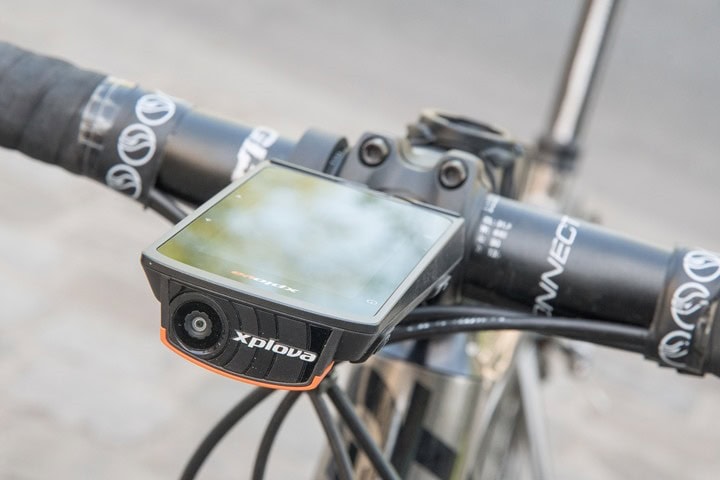
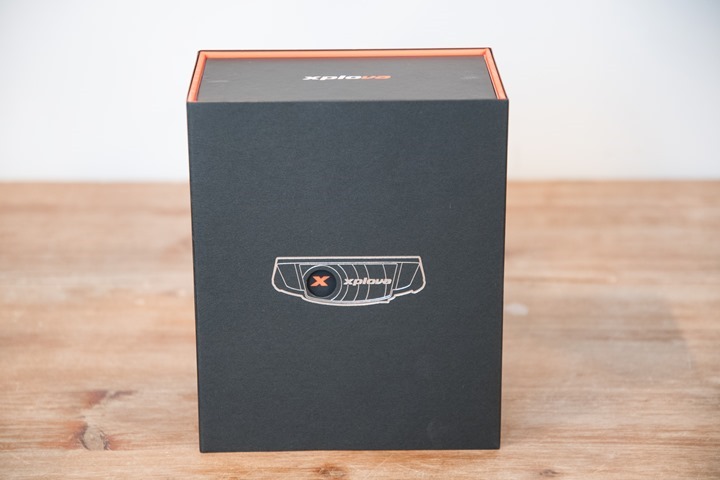
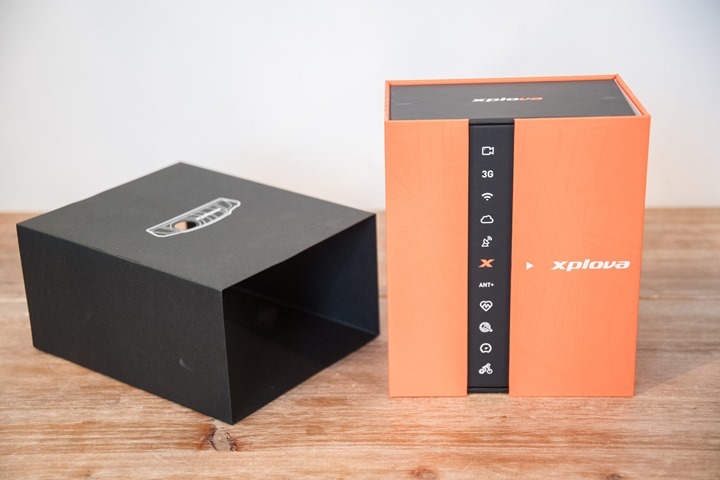
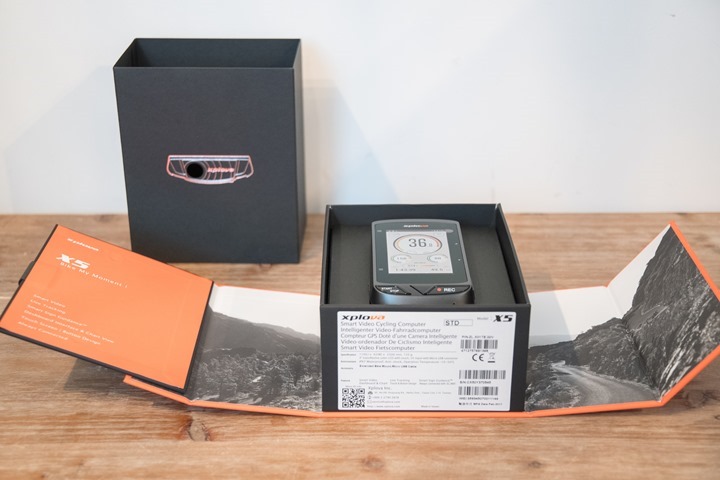
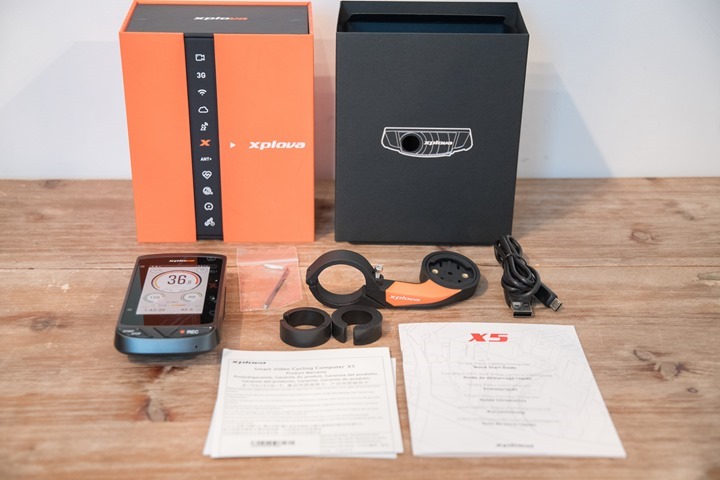
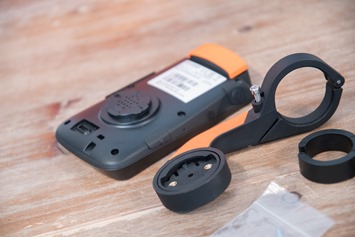
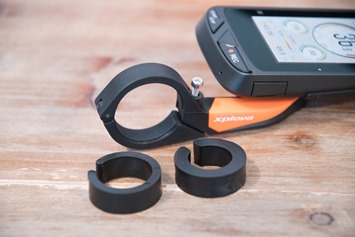
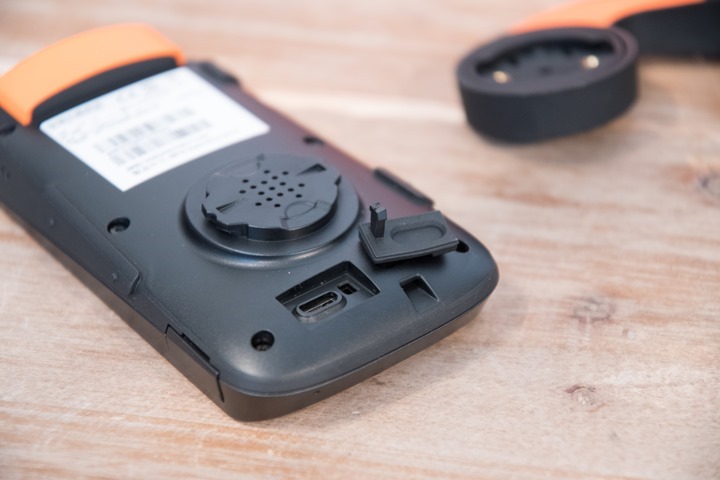
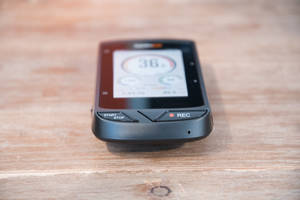
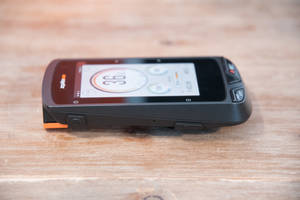
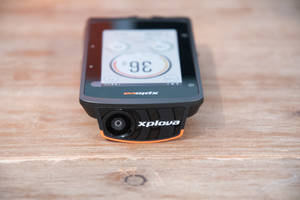
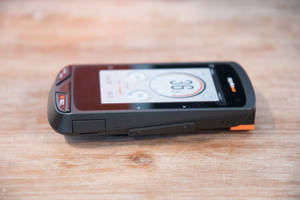

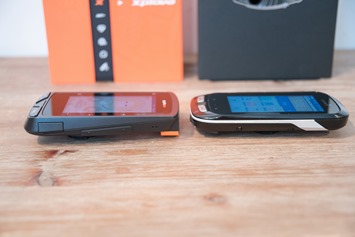
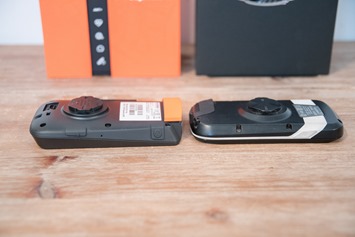
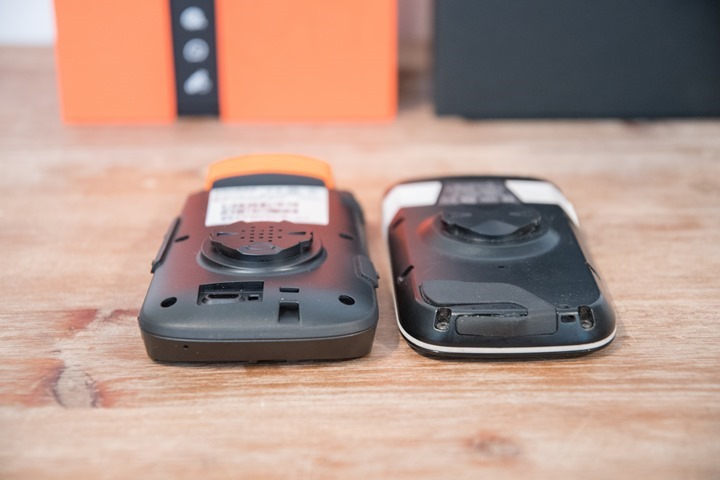
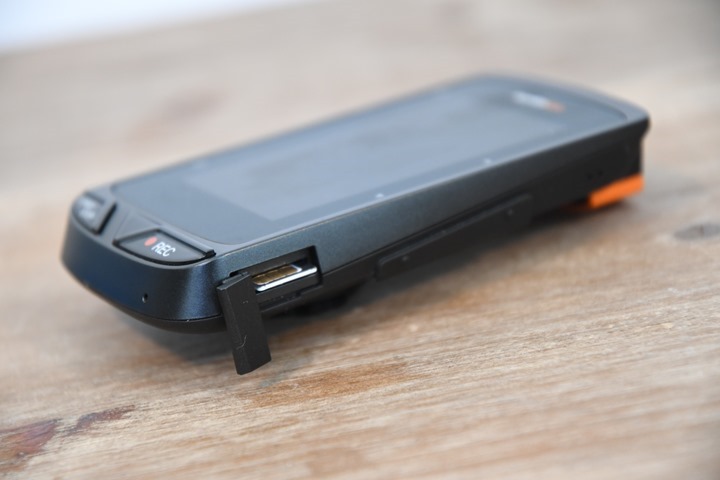
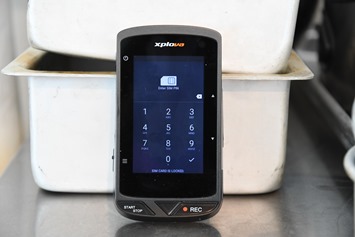

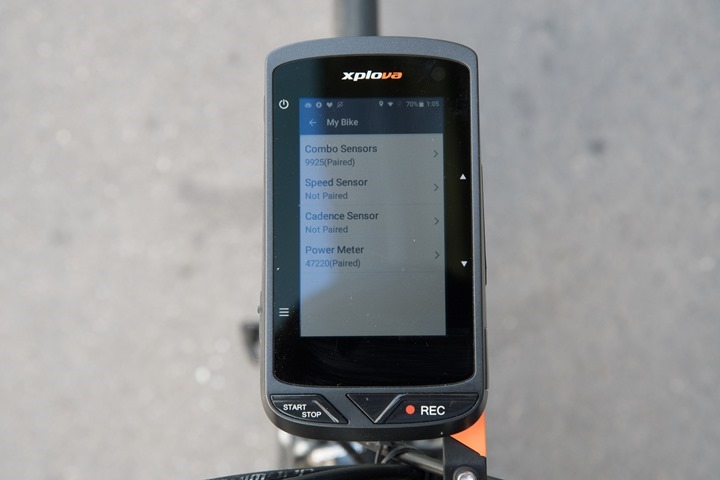
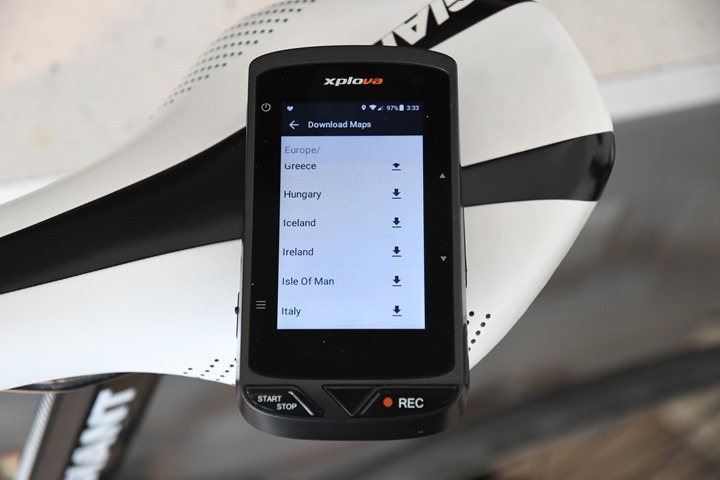
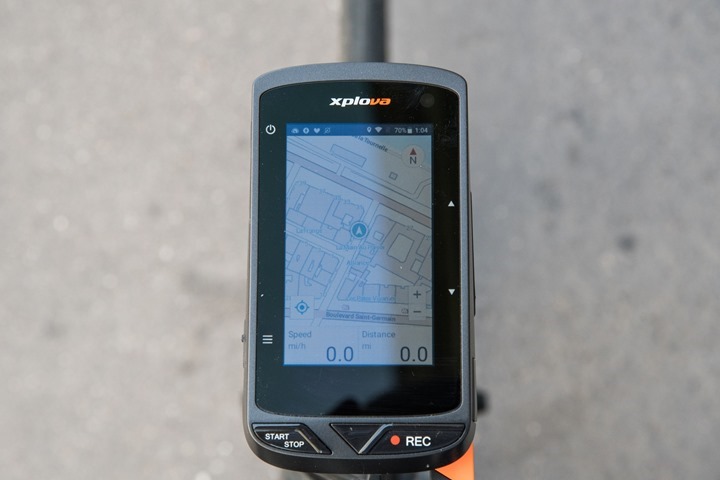
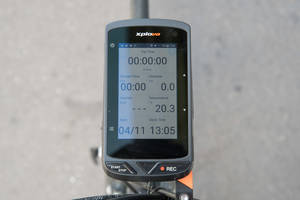
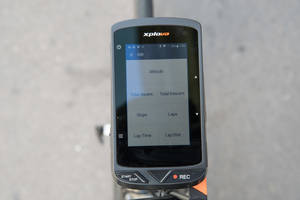
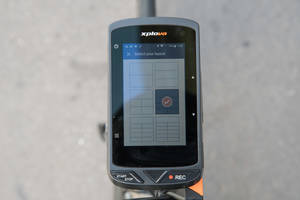
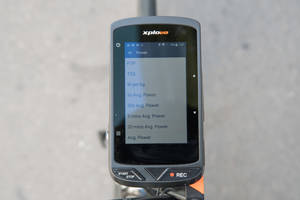
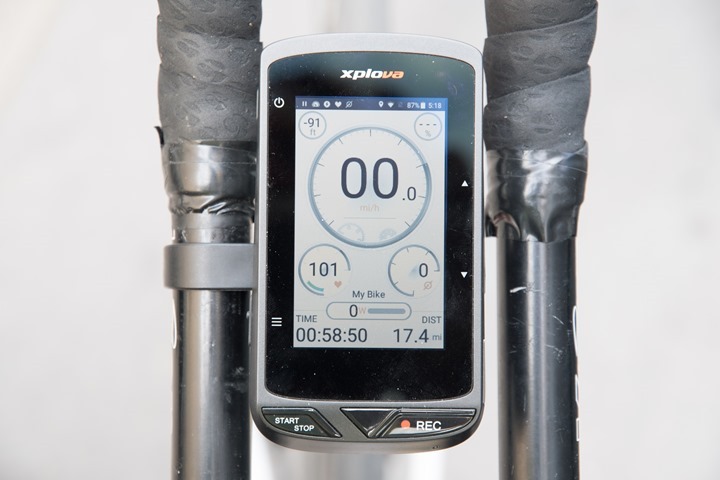
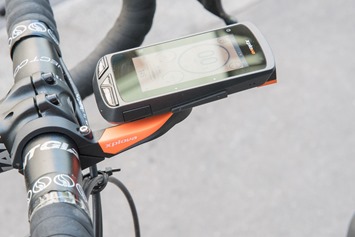
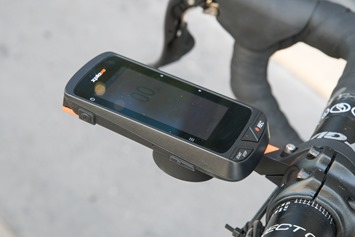


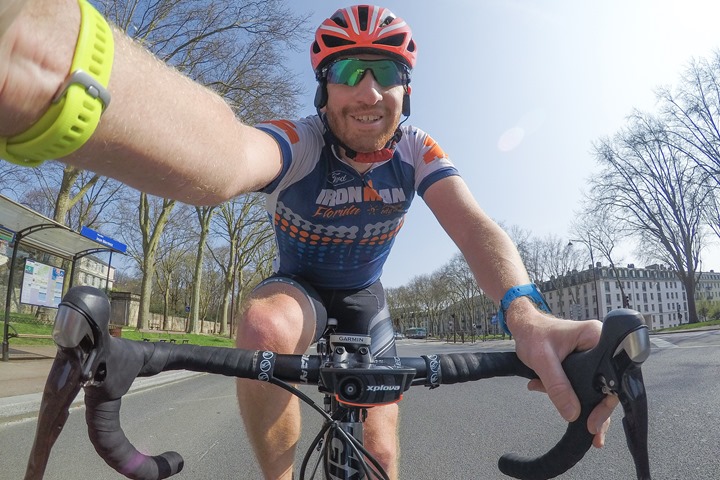

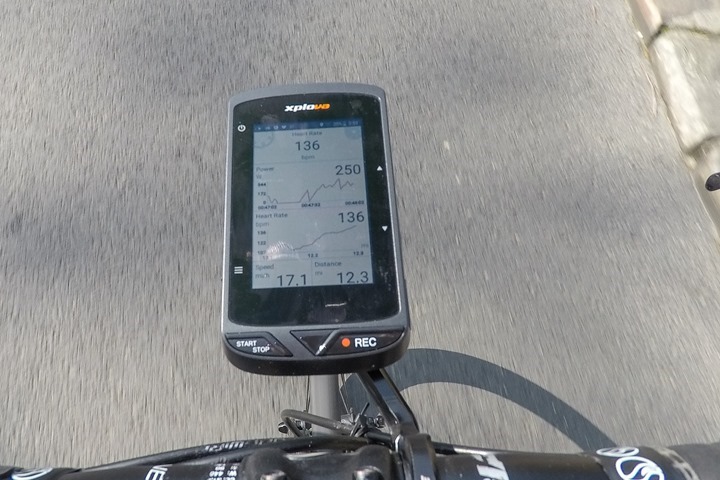


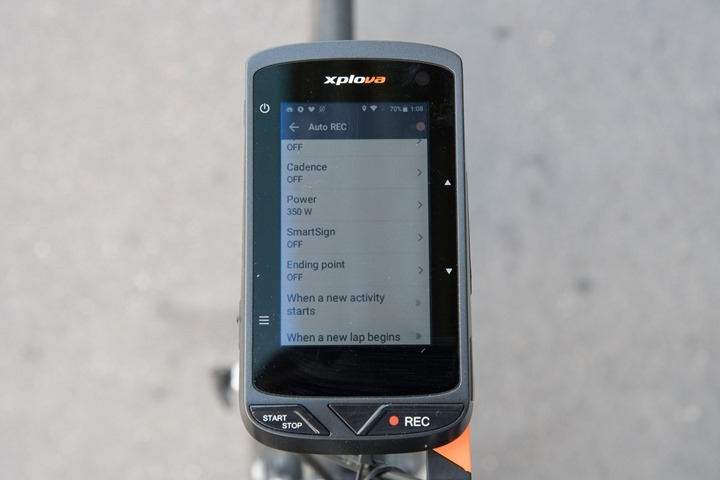
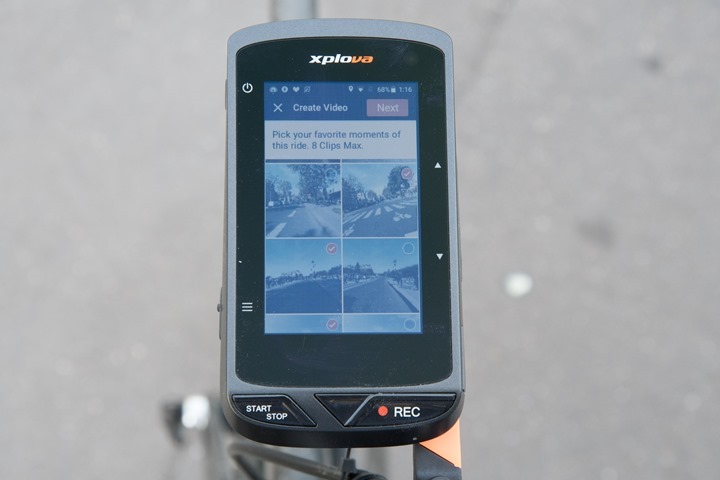
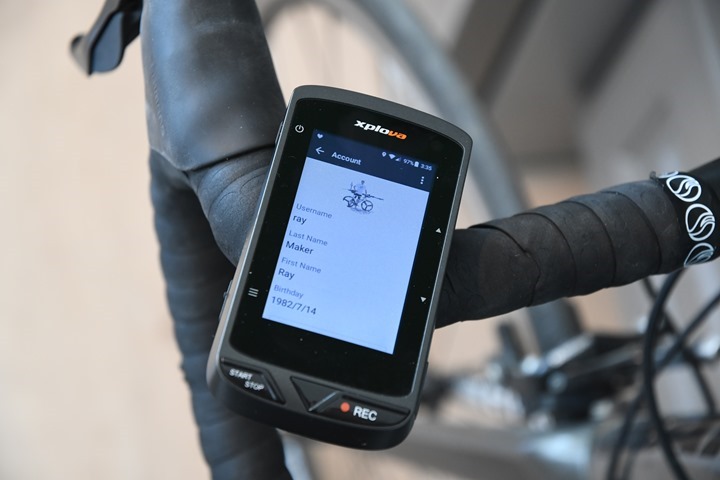
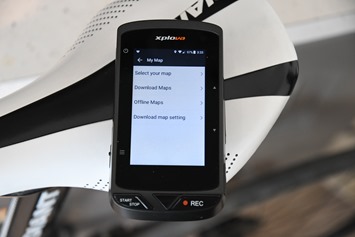

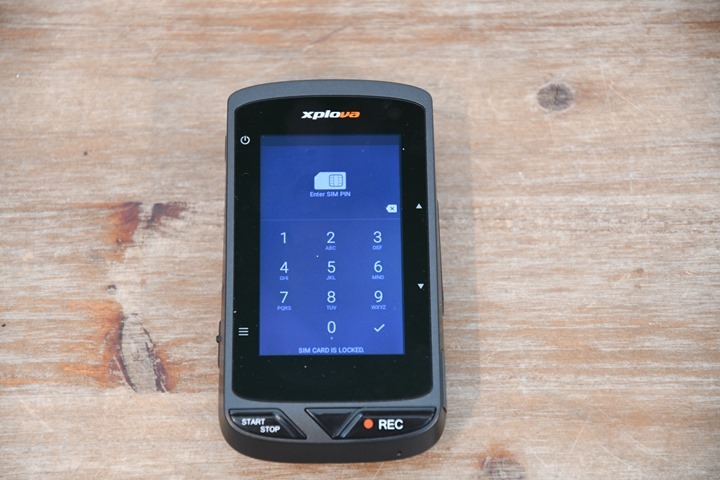

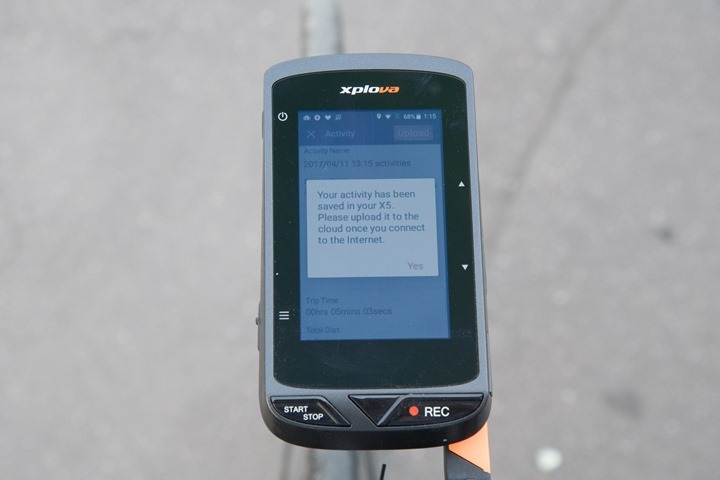

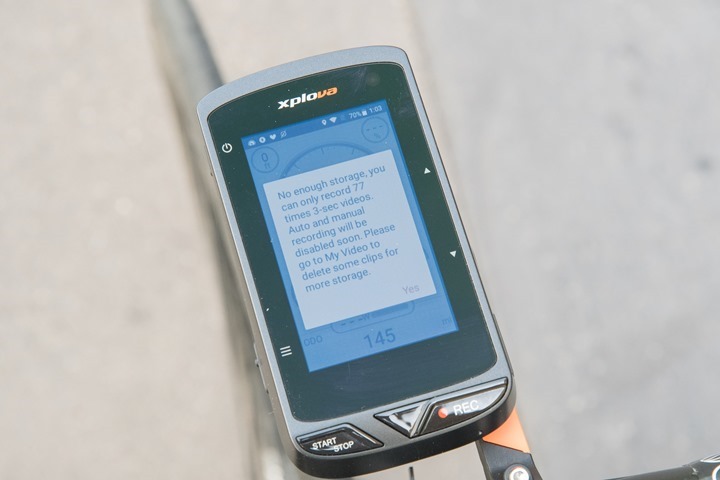
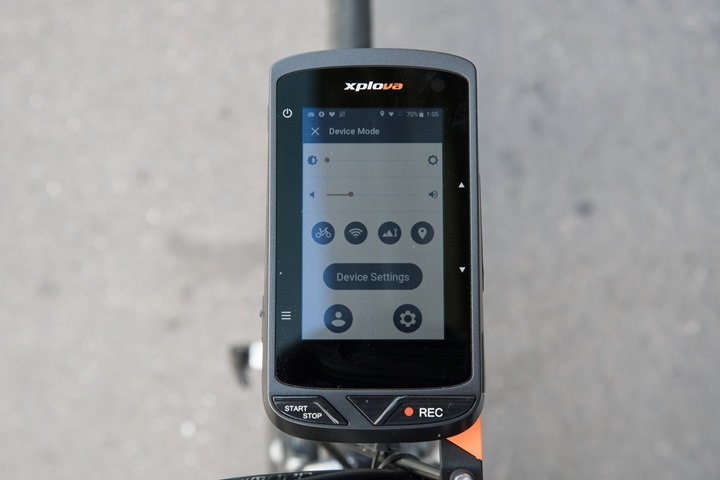


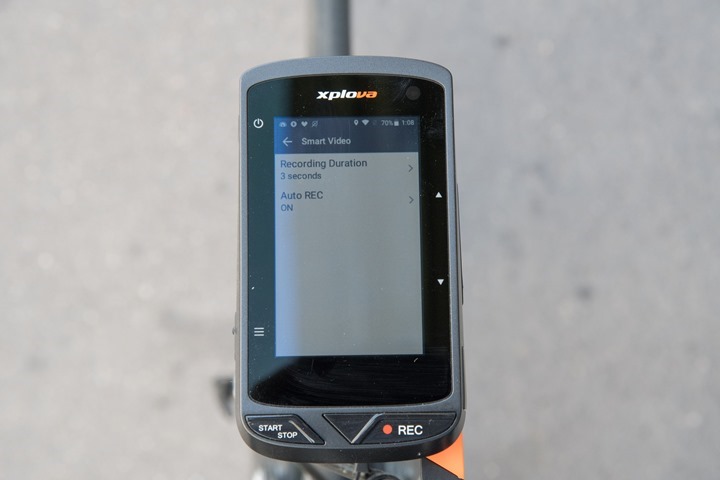
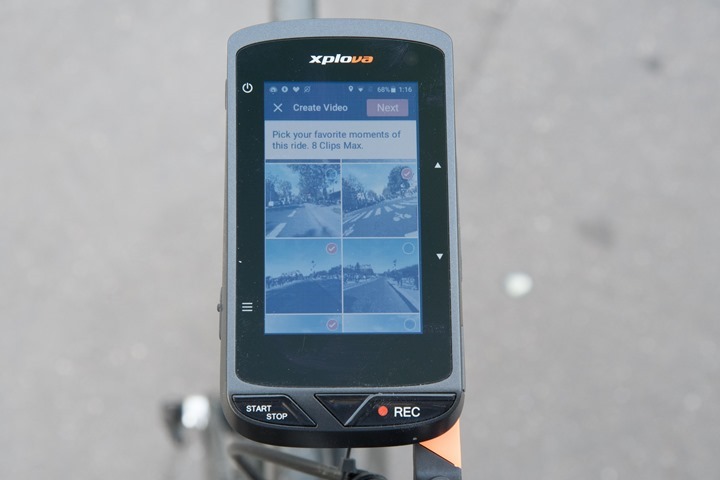

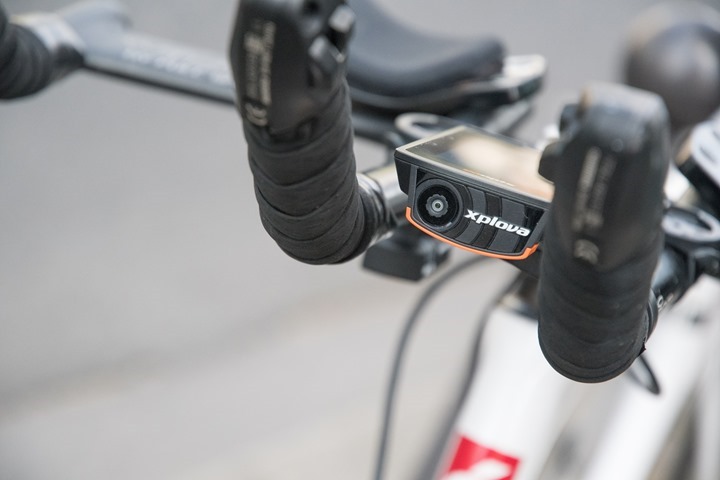
















Hey DC….kept it short and sweet and as usual quite good…heres to hoping Wahoo or Garmin or both read this …one short spelling issue “such as putting in a batter camera ” I am pretty sure you meant better….thanks again for a great review.
Thanks!
I would actually prefer a “batter camera” on my Garmin, keep me motivated for a reward on my way home
Camera might be a gimmick at the moment, but great potential there from a safety standpoint. I’ve been hit by a truck before while riding and luckily they stopped to take care of me. There has been many near misses and it sure would have been nice to be able to have a picture/recording of the vehicle. If you could set the camera to record when there is a sudden braking that could be very helpful in an accident.
For the moment will stick with my phone/Garmin but I hope they take some of these designs in mind for next versions of Edge.
it won’t really be able to work in that type of scenario unless rate of deceleration were a trigger (or similar..proximity etc), which it can’t be with the X5. the camera is geared towards ‘here are the interesting bits of my ride’ rather than ‘here’s the bit where I nearly died’. although I guess that would be interesting too.
Yeah, if they had an accellerometer in there (I presume they do), they could do what Cycliq does or even the Edge 520/820/1000 Explore with crash detection. If the bike crashes (aka tips over), simply save the last 30 seconds or so.
Of course, the problem there is burning the camera the entire time. But if you turn it around and consider a ‘commuter’ mode, whereby you don’t care so much about many hours of battery life, it’s quite practical.
I was thinking about exactly this, maybe starting at the same point of how most the voice activated stuff works (Alexia, Siri, Google Now…etc) and switch into video. Still would need a lot work, but a good starting point.
You mean so if it hears your shout “SHHH**********TTTTTTT!!!!!” it starts recording? :-)
That’s assuming one is sideswiped & the bike stays upright. There was no car, but do you remember Steven Kruijswijk’s crash in last year’s Giro? His bike did what, 5 somersaults?
link to youtube.com Good luck getting anything useful out of a video in a similar crash.
you should check out Cycliq’s products for cameras in the event of a collision
How much battery life would be drained if the camera did something like 1-2FPS instead of 60? That way you can get a mostly decent security camera without the added bulk of a Fly12.
yes the settings screen does somewhat etch itself into your permanent consciousness. I never noticed the YES (ok/no) thing until now and never got the pin-with-the-sim thing. My Taiwanese is passable so I never really noticed the Taipei-focus too much either (hmm, maybe, actually I did).
I wonder if a non-Westerner reviewing it would view the interface similarly? (genuine question)
Indeed do the youth of today think of Ok/Cancel…yes/no…?? probably not as much as they used to as that Microsoft paradigm has moved on in the app-world that now seems ‘click and hope’ focussed.
what you said seems fair overall tho.
BUT that sim card is just asking to be all featured up and used in all its connected glory. surely that hardware addition must be one of the next big leaps for Garmin et al. ?
You missed the fact that the touchscreen doesn’t work at all. oh, my bad, wait a minute that was the garmin 820. Of course even IF the X5’s screen didn’t work (which it does) you could at least use the X5’s buttons most of the time just like the 820. oh wait a minute the 820 has no buttons that can navigate through the device
I’m made a bit sad by the X5. It is innovative (and all the other negative stuff too) but will probably generate less interest than Polar’s upcoming refresh of the M450.
Totally agree that the SIM card could be used for much more. I think the challenge Garmin had in the past was the certification/telecom process by baking in the SIM/service (i.e. GTU10). But by going with a SIM card slot, they sidestep that (like what Pebble planned with core).
As for the touchscreen, I did call it out in the list at the end of ‘things I love’, in that it works really well. I even dumped a glass of water on it for fun while on a trainer, and it still works. Though, the downside is the buttons don’t work well at all, I find mine were incredibly tough to push. And that’s without even talking gloves trying to find them.
There is no reason to put a SIM card in it can be a virtual SIM card, the radio obviously has to be built in but no physical SIM card should be needed. The iPhone will be moving to that is my understanding.
The certification for gsm would add some complexity to the design and wireless would reduce battery life… Garmin has to have all of the equipment based upon their aviation business.
I guess since it’s fixed there’s no reason to make the battery just a little bit bigger even though people kind of get freaky about the weight of stuff on their bike. I just don’t skip leg day.
Needs a selfie camera so when you hit 350 to 400 watts it takes a picture of the face you’re making that would be the selling point ,?
This abbreviated format is good, especially for a non-flagship product that you aren’t likely to recommend widely. The full details in a typical review are great, but as the industry matures, things like GPS accuracy seem to be more consistently good. So it makes more sense for you to focus your efforts on more “interesting” issues, as long as you don’t notice problems in the basic functionalities users have begun taking for granted.
I won’t give my Garmin away. Why should I replace a BMW by a Fiat?!
Innovative products like these are the reason why leading companies like Garmin are always pressed to get better.
Wow, in many ways I could have skipped the reading and just watched the video. Truly awful judder and poor quality. Shame, because reading the first part of the review seemed to suggest that they had some good ideas but effed up their signature feature.
Second to last paragraph. “batter camera”, pretty sure you meant “better”. Just a head’s up, thanks for the great information.
Loved the format. You should keep it for the future for products that fits the profile.
Note that Garmin Connects map defaults to its HQ while its loading my workouts, which is in MAL. Good that that’s the only thing it does, and it only takes a few seconds to load.
I am suprised Garmin couldn’t integrate an IQ software that would control a conectted virb camera to record at specific variables over a 2 hour ride (rough battery life of camera). We can control the camera to take pictures from watch and computer already. It’s very possible for a good software coder.
About that country you mentioned, I think I know this one… could it be a big one in the Southern Hemisphere where people speak one language that has the same latin origin as english?
Except English did not orginate from Latin.
My bad.
Will change the phrase to “language that share a significant influence of vocabulary from latin”
Either way…nope.
Probably somewhere technologically advanced in Asia with very polite people.
Regarding the waypoints and markers, the Wahoo Elemnts can do it. You can add them when using RideWithGPS, you simply have to add a custom POI in your CUE sheet with the info you want in the title and it’ll show up during the ride.
Is the, “graveyard of partially finished review posts” where the Garmin Epix review ended up?
:)
There’s many things in that graveyard…Epix, Edge 520, 820, TomTom Spark 3, FR35, GoPro Gimbal, Recon Jet, and countless others.
Some might see the light of day.
Great post Ray! The shortened format is definitely appropriate for devices like this, getting right to the heart of the unit for the good and bad. Keep up the great work.
Still a lot more detailed than some reviews where the reviewer seems to just repeat the publicity material and you are not sure they even went for a run/ride with it.
I guess a lot of the products from the same company have lots of common components so if say talking about Garmin’s Edge 520/820 and FR35 there are lots of bits like say hooking up to GC that aren’t of huge value but commentary on say why one might go 520 over 820 or FR35 over 230/Vivoactive would be very useful.
Yeah, it was a bit frustrating to see the coverage on the Xplova by another major media outlet that was paid to provide coverage on it. Unfortunately it’s been the trend with them lately becoming less and less objective with nothing bad at all to say about anything.
I really like them, but I think that one in particular was pretty blatantly a paid ad (as they admit in the comments), without proper notice that it was a paid ad.
Thanks Ray,
I think you know you are doing us a service with even a cut down review. I’m sure Wahoo / Polar / Garmin R&D departments are all subscribers!
Any extra competition, no matter how badly implemented the first iteration is, is welcome in my book.
At the moment I’m hoping that Garmin are looking carefully at how the Wahoo cycling computers are configured by mobile (or Cell) phone, rather than having to press buttons or screens 1 million times each time you have to do a reset. I’m also hoping they are still looking at turn by turn navigation, but won’t hold my breath there.
All of them could do with good test managers, but thats a different story, they probably were good before the marketing and corporate functions kick it out of them to hit an arbitrary date!
Keep up the good work.
The setup/configure on phone thing is interesting. I think Wahoo strikes a good balance in that I can do it mid-activity. Whereas Polar/Suunto can’t do that – which is frustrating to me.
Garmin can configure it sans-phone entirely, which is generally my preference. But I also wish I had the ability to do it via phone. I guess I want the best of both worlds.
Ray
Can you get the crew at Garmin to enable us to rename sensors on our phones… Having a better keyboard would be nice… Plus why not have the ability to “learn” all the ant devices you have and push the information to any watch/bike computer/etc.
Yeah, really wish we could. I like how Wahoo has implemented, albeit still only device specific.
It’d save me boatloads of time if my Garmin units could cross-remember device ID’s. Or basically, one of the main drivers for what I did the DCR Analyzer (to remember device ID’s across files).
It’s good to see that you can still write critical reviews.
Thanks for the review Ray.
So what’s the best “Camera mounted on bike, take good quality pictures and video easily, not worried about sensor data, but would like location recorded” option today :) ?
GoPro Hero5. :)
Need more sleep… to clarify, Hero 5 Black.
haha :)
Thanks Ray – it’s on my list now :)
Ray’s big thing with the GoPro Hero5 Black is that it’s waterproof. I much prefer the Garmin Virb for the GPS capabilities
This isn’t a rant, although it looks a bit ranty. It’s also not anti-Garmin, just a good example as to why your format for this review ought to be expanded.
I’d like to see a “what I hate” section on all your reviews, especially Garmin ones as it may push them into action on some pretty basic stuff. Having just updated to the 935 from 920XT and Fenix 3 I had to manually set literally every setting – you’re probably so used to it by now you don’t even see how ridiculous that is any more. Once I had it set up, Connect then overrides several settings repeatedly (I switch off the move alert, it wants it on) until I go to the website and set the same setting I just set 5 times on the watch. I’d be interested to see you step back and reassess a Garmin watch as if it were from a new company, I think there are a lot of things we wouldn’t consider acceptable from new players that we’ve all just become accustomed to over the years. to rub salt into the wound, Garmin still don’t even have a way to submit bugs – support just tell you to reset and the forums are hit and miss which means they are missing crucial feedback that the likes of Wahoo thrive on.
p.s. the Taiwan focus is no different than the massive US focus on most other goods, you probably just don’t notice because you’re from the US. Garmin always put their HQ in as a waypoint on most GPS units for instance, which means it always assumes that’s where you’re heading at first.
Sounds typical for Asus, sounds great, poor follow through Wich will probably be followed by a lack of meaningful support.
Hi Ray. Ad improved privacy setting – wouldnt it be even better to ask privacy options not after the ride, but rather right at the start (or at least during the ride)?
This way it could be also used for configuring live tracking.
Potentially for live tracking, though for standard non-live tracking it might be better afterwards.
I think the benefit post-ride is that if you decide mid-ride to go somewhere specific (i.e. to your house or a friends house in a rural area), then you can zap that.
Makes sense. Maybe the best of both worlds is allow to change the setting mid ride, but if it is not set, then ask after the ride.
Ooooh Man ! I wait for Garmin Competitor so hard …. i see this and will be in Love @ first Look.
Built in Cam …… Nice ! Good Display … better than Garmin i think.
But ….. no SD-Card ??? They are Stupid ?? Short Clips ??
All this Ingeneers do no Sports ??
Ooooh Man …. i still waiting …… soo HARD !
I believe that there is a new version of this…the x5 EVO. I’ve only seen some limited info on it and it doesn’t look too evolved from the original. I was wondering if you could shed any light on the new developments (if any/many)
thank you
I vaguely remember seeing some publication talk about it over the course of Eurobike, but I can’t remember who or what. :-/
Seems the X5 EVO is available now. Looking to sort most of the issues.
As I am really looking for an alternative to Garmin it would be great to see a review shortly.
Thx in advance.
Ray,
The X5 Evo is Vastly improved over the X5, I’ve had the pleasure of sampling one for a good month or two now, after having a sample unit of the original X5, it is well worth you having another look at it imo.
Longer recording, dashcam mode, data overlay are all now there, and you only need the new app to interface with the device.
Would love to see an updated review of the Evo version. In the UK you can currently get the full bundle including HRM and speed/cadence sensor for £199 at Halfords, and around £160 using Zeek/British Cycling membership. Seems like you get a lot for your money at that price!
So I decided to buy the Evo as it was cheap, and it’s been another love/hate deal like Ray experienced. The good is that the screen is decent, not Karoo good, but good enough even in sunlight. The camera works well and it’s great to have it built-in and to be able to trigger it any time. The OS is fairly responsive and it shuts itself down if you haven’t used it for a while, so you don’t get a dead battery the next day. Take note Hammerhead! Initially I did have an issue with Strava syncing being a bit hit or miss, but the latest app update seems to have resolved that one.
The bad side is mostly nitpicks, but one show-stopper. Starting with the small things, although it syncs to Strava it names every ride “A complete ride around the city”, which is irritating as I have to change it every time.
It has multiple bike profiles, and multiple ride types, but it’s clunky to change bikes, and you can’t associate a bike with a ride type. You can however link a ride type to a bike, so that’s something I guess. Unfortunately you have to delve into the settings to change bikes, whereas ride type is easily switchable from the main homescreen, so it would make more sense to do it this way.
For some odd reason, it detects my Team Zwatt Zimanox power meter OK, but displays the cadence as 90rpm constantly. I thought cadence is a standard ANT+ profile, so in theory it should just work right?
Finally, the GPS is very erratic on mine. Not sure if I have a faulty one, but it will frequently have me wandering off course through houses/fields when I’m actually on a road nearby. Check the pic, the yellow line is where I was, and the red is where the X5 Evo thought I was.
read your well detailed review of xplova x5. jus want to know if garmin’s speed & cadence sensors are connectable to the xplova ?
Should work just fine, as it supports that sensor type.
X5Evo is such Great and Better. I really feel the X5Evo is good to use !